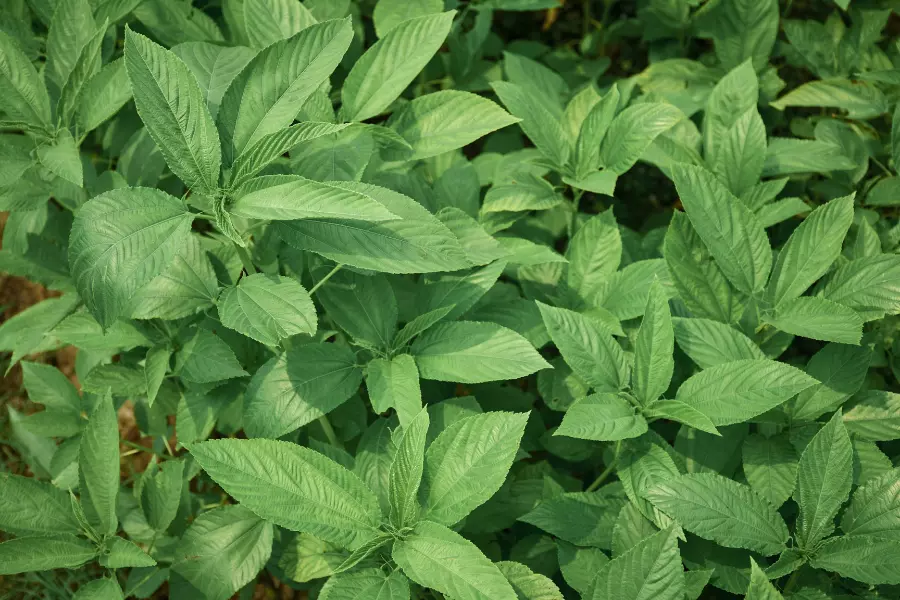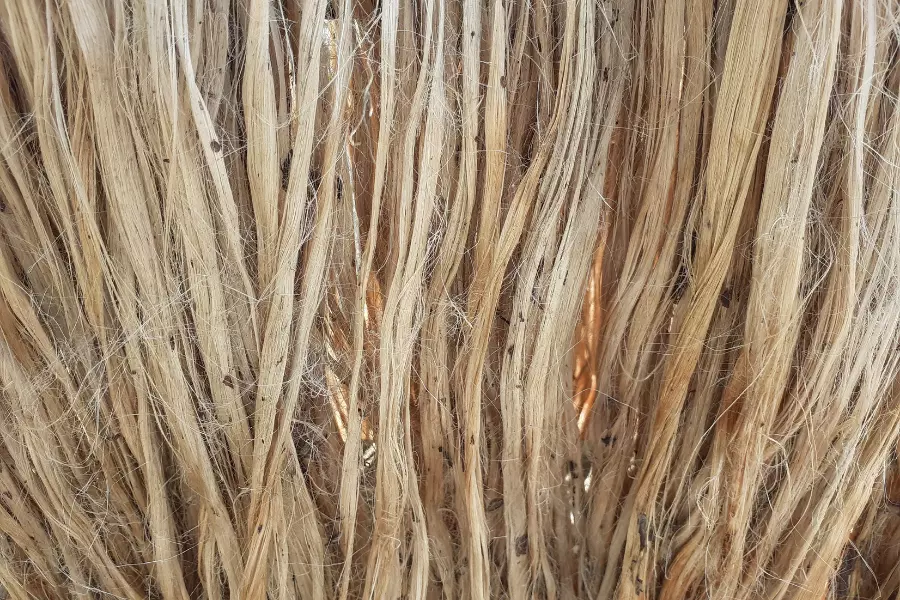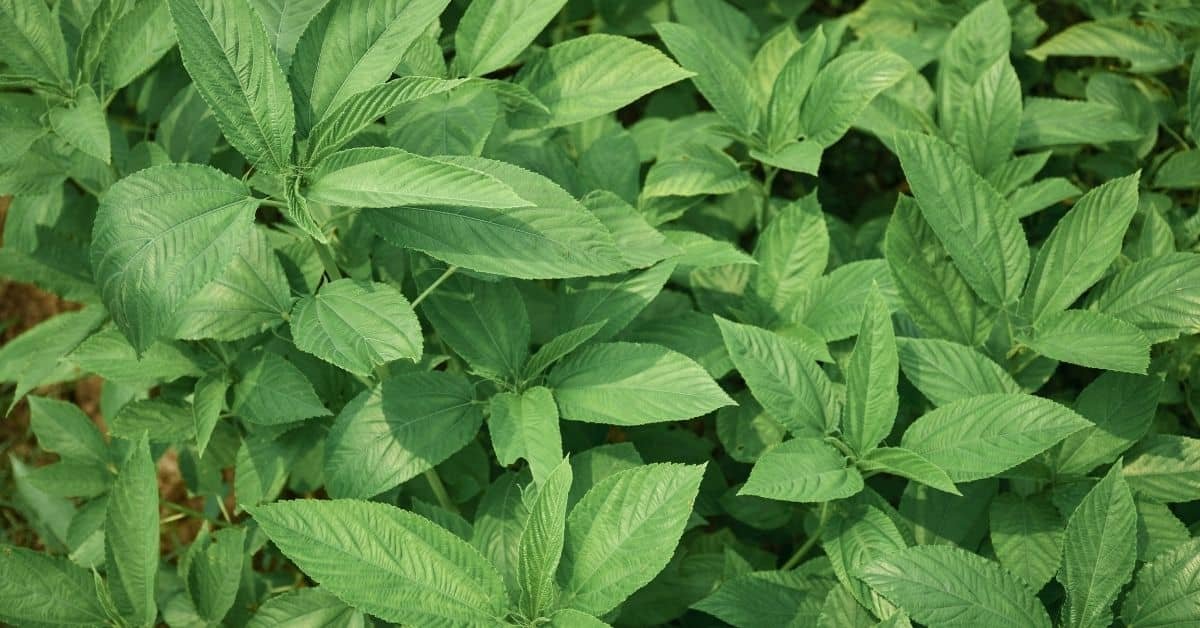The jute crop is an annual herbaceous plant that is cultivated for its fiber. Jute fiber is used to make a variety of products, including burlap sacks, twine, and carpet backing. Jute is a versatile crop and can be grown in a variety of climates. It is a rain-fed crop and does not require irrigation. Jute can also be grown on marginal lands, making it an ideal crop for countries with limited resources.
Jute Plant

- English name: Jute.
- Family: Tiliaceae.
Species
- Corchorus capsularis (White jute).
- Corchorus olitorius (Tossa jute).
Origin: Indian Subcontinent.
Distribution: Jute is an important industrial crop in Bangladesh. Bangladesh ranks second among the jute growing countries. Bangladesh, India, and Pakistan are the most important producers of jute fiber in the world.
Economic Importance: It is grown primarily for its fiber which has large commercial importance in the world. Fine quality fiber is used for the manufacturers of different value-added products such as household, textiles, industrial textiles, reinforced plastics, handicrafts, paper, pulp, geotextiles, etc. It has been proved that fabrics from jute fiber of all designs and patterns could be woven of the automatic loom and the products would be smooth as those made of cotton. These products are emerging as major foreign exchange-earners.
Variety: Two cultivated species namely White (Corchorus capsularis L.) and Tossa (Corchorus olitorius L.) jute are grown.
White jute:
- CC-45, CVE-3, C-6 (Early variety).
- CVL-1, D-154, BJC-83, BJC-8370 (Late variety).
- Tossa jute: 0-9897, BJRI Tossa pat 4, BJRI Tossa pat5 etc.
- BINA variety: Atom pat38, BINA deshi pat 2, BINA patshak1.
Jute Crop Cultivation
Climate: Jute requires a warm and humid climate with temperatures fluctuating between 24 C and 37 C. The permissible relative humidity favorable to growth ranges between 7090 %. Rainfall is one of the most important factors for growing jute and the ranges from 250-270 mm are essential requisite for good growth and yield of jute.
Soil: Jute is widely grown in sandy loams, clay loams with varying soil management practices. Sandy soils and heavy clay soil are unsuitable for jute production. Soil with a low pH gives a poor crop. The optimum pH is around 6.4. High and medium high land where rain and floodwater do not stand is suitable for Jute mallow or nalta jute or tossa jute cultivation. In the seedling stage, water logging is not tolerated by both species.
Land Preparation: 5-6 deep plowing and cross plowing followed by laddering with clod-free fine tilth condition. Soil moisture 2145 % is ideal for germination.
Seed Rate (According BARC)
A. Broadcast method
- C. capsularis (white): 7 – 8 kg/ha. • C. olitorius (tossa): 5 – 6 kg/ha.
B. Line sowing method
- C. capsularis (white): 5 – 6 kg/ha. • C. olitorius (tossa): 3 – 4 kg/ha.
Seed Treatment: Seed treatment with Vitavax200 (0.4%) i.e. for 1 kg of seed with 4 gm Vitavax200 or Provax200 (0.4%) before sowing of seeds or preservation of seed is very useful to control all fungal seed-borne diseases of jute.
Time of sowing
- White jute: Late February – April.
- Tossa jute: 15 March – April.
- For seed production, the suitable time for seed sowing/ cutting is mid-July – the last week of August.
- Sowing time varies 15-30 days from North to South.
Sowing methods: The traditional method of sowing of jute by broadcasting. For even distribution of seeds, it is mixed with loose soil because the seeds are very small. For still better results, it is advisable to broadcast the seeds cross-wise. Line sowing is also done.
Spacing
- Line to Line: 30 cm (Capsularis), 27 cm (Olitorius).
- Plant to plant: 57 cm (both).
Fertilizer Application of Jute Crop
Fertilizer (Kg/ha) C. capsularis C. olitorius
Urea 80-100 20-60
TSP 40-50 15-30
MoP 60-80 22-50
MgSO4 22-40 22-40
1/2 Urea, Total TSP, MoP, and MgSO4 should be applied during final land preparation. The rest 1/2 Urea should be applied at 42-50 DAS when the plant height is 10-12 cm.
Intercultural Operation of Jute Crop
Weeding, Thinning, and Mulching: Weeding is one operation that can increase crop yield. Efficient weeding saves moisture, crop nutrients, and to some extent air and light required for the cultivated crop. Intercultural operations are as follows:
- First weeding, mulching, and simultaneous thinning should be done after 10-15 days of sowing (DAS).
- Second weeding, mulching and simultaneous thinning may be operated after 25-30 DAS.
- Third weeding, mulching, and simultaneous final thinning and top dressing of urea fertilizer followed by hoeing may be operated after 40-50 DAS.
- The jute field should be kept clean to avoid infestation from insects and pests. So pest management care should be necessary.
- Excess water should not be allowed to stand in the plot at growing stages.
Irrigation: Jute is a rainy season crop. There is no need for irrigation. If moisture is not sufficient enough in the field after sowing of seeds or before sowing of seeds, light irrigation is given for proper germination. Later on, this crop is irrigated when the plants are 10 to 12 cm tall and 3-4 leaves are formed.
Supplemental irrigation may be given to the crop according to the requirement of the crop. The field should not be irrigated too much but care should be taken that the field does not become dry and compact and the root development is hampered.
Insect Pest and Disease of Jute Crop
Insect Pest: Jute hairy caterpillar, Jute Semilooper, Jute apion, Jute red mite, Jute white mite, Field cricket, Cutworm, Black hairy caterpillar are important insect pest of jute field.
Control
- To control Spraying with Diazinon 60 EC for Jute hairy caterpillar, Jute Semilooper, Jute apion.
- Apply Heptachlor for Field cricket, Cutworm.
- Spray the infested fields using recommended miticide like Kelthan 42% EC or Torque 55% WSC or Nerot 50% EC for Jute red mite, Jute white mite.
Disease: Stem rot, anthracnose, Blackband, Seedling blight, and rot are the major diseases of jute.
Control: Burn the crop debris and spray 1 gram mancozeb powder per liter of water.
Harvesting Time: Capsularis: July – August. Olitorius: August – September.
Maturity Symptoms: The quality of jute fiber has a direct relationship with the stage of harvest. Early harvesting gives finer fiber of good quality whereas late harvesting gives a large yield but a coarser fiber.
- Few days before flowering.
- It could be harvested between 110 – 120 days.
Method: The plant is generally cut with a sickle close to the ground level by hand. The bundle should be made after grading of jute plant as small, big, thin, thick. Leave the bundle in the field for 23 days to allow the leaves to shed then ret. The color of the fiber is darkened if the leaves are allowed to stick to the plant during retting.
Retting of jute fiber

Retting is a biological process by which the best fiber gets loosened for easy separation from the woody stalk. During this process, the gums, pectins, and other mucilaginous substances are removed by a combined action of water and microorganisms.
A number of methods have been developed and recommended for the improvement of fiber quality through retting. For retting gently flowing, fairly deep, clear, and soft water is ideal. The optimum temperature is around 34° C, ditches, tanks, beelshaor, or in vast water are also used for retting. After bundles of jute are kept in retting water and placed side by side with 2/3 layers in such a way that there remains ample space for the easy movement of water and microbes. Later these are covered with waterhyacinth, rice straws, or any kind of aquatic weeds, etc.
The float/ jack is then weighed down with concrete blocks or is kept submerged (at least 10 cm below the surface water) with bamboo crating. Earth chunks, logs of banana, mango tree, or any other green logs as covering or weighing materials should be avoided as they convert the fiber color dark (shamla). In that case, polythenewrapped earth chunks can be used safely as it protects the plants to come in contact with the clay.
For accelerating the retting speed and improving the fiber color, about 1 kg of urea may be applied in 1000 kg of green jute plants. Urea may be added either in a water solution or sprinkled directly in the layers of the jute bundle in jute float/jaks. Retting is a microbiological process and, therefore, the endpoint is determined by inspecting a few plants each day from the tenth day onward.
If fiber slips out easily from the wood on pressure from the thumb and fingers, retting is considered complete. After that, the float/jaks should be taken out and extraction of fiber must be completed as soon as possible. Because any delay results in a poor quality of fiber.
Jute Fiber Extraction

The fibers can be extracted from the retted plants in two ways – (1) By taking one or two plants at a time sitting on the dry land. (2) By standing in kneedeep water and using a bamboo frame, a bunch of plants is taken out of the jak and the fibers are extracted from the whole bunch at a time by breaking the jute sticks at about 45 cm from the bottom.
In either of the two ways, if the bottom parts of the retted plants are scraped off by hand prior to extraction or beaten with a wooden beater the number of cuttings is reduced significantly. Better fibers are obtained if extraction of fibers is done on the ground taking single or two plants at a time. After extraction, the fibers are washed thoroughly in clean water so that broken jute sticks, a cuticular layer of barks, clay, or any other dirt get free from fibers.
Removal of Dark Colour
The shamla fiber (if produced due to improper practices) could be converted to bright and normal fiber if they are immersed in 2.5% Tamarind water solution or an Acid mixture (0.25% sulphuric acid, 0.25%. hydrochloric acid, and 0.6% oxalic acid). But the treated fibers should be well washed in clean water so that no trace of Tamarind or acid solution is left in the fibers. Otherwise fiber quality deteriorates at storage.
Ribboning and Ribbon Retting
Through this technique ribbons (bark of plants) can be very easily separated out from the woody core in the green stage (just after harvest). Before retting, ribbons should be arranged into ring form. If retting water is not available in the nearby places, ribbons may be retted in big earthen vats, filled with clear water. One may ret 30 kg of ribbons in one of such big earthen vats.
If shallow small pond/ditches or canals are available in the nearby places, the ribbons may be retted by putting the ring of ribbon in a bamboo pole and steeping under water tying with two bamboo poles fixed in the bottom of the pool. Retting may be conducted in artificially made small ditches dug around the homestead of the farmers or in a jute field covering the ditches with polythene sheets. The ditches may be filled with clear water from tubewell or from any other water source.
Advantages of Ribbon Retting
- A lesser amount of water is required for retting.
- The quality of fiber improves.
- The jute sticks remain stronger since it is not retted.
- Minimum transportation cost is involved.
- Cutting free better quality fiber fetches a better price.
Drying of jute fibres
After washing, the fiber should be dried well in a bamboo frame or by hanging in any way, so that it does not come in contact with mud or dust. Fibers should not be dried spreading on the ground. Mud or dust not only lowers the quality of the fiber but also creates health hazards to jute mill workers.
Yield
- Average: 13 Quintal/ha.
- Maximum: 40 Quintal/ha.
Seed Production
- Capsularis: 45 Quintal/ha.
- Olitorius: 23 Quintal/ ha.
